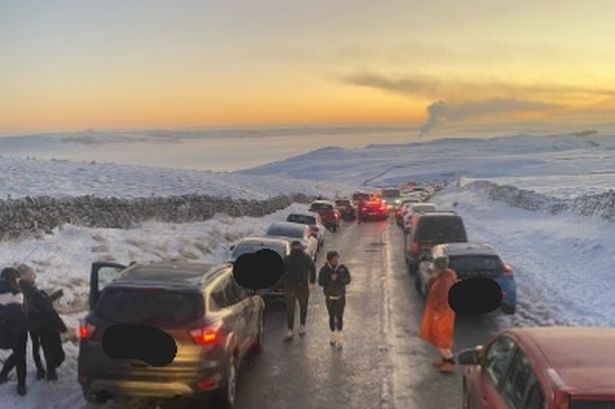The picturesque village of Edale, nestled within the heart of the Peak District National Park, became a scene of unexpected gridlock on a recent winter morning. The normally serene landscape was disrupted not by inclement weather alone, but by a combination of snowfall and inconsiderate parking. Gritting lorries, tasked with clearing the vital artery connecting the village to the wider region, found themselves stymied by a blockade of double-parked cars lining the narrow roads. This act of parking negligence prevented the essential gritting operation, leaving the route treacherous and posing a significant risk to drivers and pedestrians alike. The situation underscored a critical tension between the increasing popularity of scenic areas like Edale and the challenges of managing visitor traffic, especially during periods of adverse weather. The incident prompted local authorities to issue urgent pleas for motorists to relocate their vehicles, emphasizing the potential dangers and the disruption caused to essential services.
The inability of the gritting lorries to navigate the congested roads highlights the crucial role of responsible parking in ensuring public safety and maintaining access for emergency services. Double parking, while seemingly a minor inconvenience in less demanding situations, can have significant consequences during periods of heavy snowfall or icy conditions. By effectively narrowing the already constrained road space, double-parked cars create impassable bottlenecks, preventing not only gritters but also emergency vehicles such as ambulances and fire engines from reaching their destinations. In a location like Edale, which attracts visitors from across the country, the potential impact of such blockages is amplified, impacting both residents and the transient population. The incident serves as a stark reminder of the shared responsibility for ensuring safe and accessible roads, particularly in areas experiencing challenging weather conditions.
The incident in Edale underscores a broader challenge faced by popular tourist destinations, particularly those within national parks and areas of outstanding natural beauty. The increasing desire to experience these pristine environments often outstrips the existing infrastructure’s capacity to manage the influx of visitors. Parking provisions frequently become inadequate, leading to overflow onto verges, double parking, and obstructions. This not only damages the natural landscape but also creates hazardous conditions for drivers and pedestrians. The delicate balance between promoting tourism and protecting the environment requires careful planning and management, including providing adequate parking facilities, promoting sustainable transport options, and educating visitors on responsible behavior.
The call from local authorities for car owners to move their vehicles highlights the often underestimated impact of individual actions on the wider community. While individuals might view their parking choice as a personal matter, in reality, it has the potential to create significant repercussions for others. In the case of Edale, the inconsiderate parking not only hindered the gritting operation but also placed residents and other visitors at risk. It prevented essential services from operating effectively and could have delayed emergency responses. This incident emphasizes the importance of community awareness and the need for individuals to consider the wider implications of their actions, particularly within shared public spaces.
Beyond the immediate impact on road safety and access for emergency services, the situation in Edale also raises broader questions about the management of visitor traffic in popular tourist destinations. The incident highlights the need for proactive strategies that anticipate and mitigate the challenges posed by increased visitor numbers, particularly during peak seasons and adverse weather conditions. This could involve implementing measures such as improved signage, designated overflow parking areas, shuttle services, or even temporary restrictions on access during periods of extreme weather. Effective communication strategies are crucial in informing visitors about parking restrictions, alternative transport options, and the potential consequences of inconsiderate parking. Such proactive measures can help to balance the demand for access to these beautiful areas with the need to protect the environment and ensure the safety and wellbeing of both residents and visitors.
Furthermore, the incident in Edale serves as a valuable case study for other tourist destinations facing similar challenges. It underscores the importance of developing comprehensive traffic management plans that consider not only the volume of visitors but also the specific vulnerabilities of the location, such as narrow roads, limited parking, and susceptibility to adverse weather conditions. Sharing best practices and lessons learned from incidents like this can help other communities to implement effective strategies to mitigate risks, ensure public safety, and preserve the beauty and accessibility of their natural environment. By adopting a proactive and collaborative approach, tourist destinations can strike a more sustainable balance between welcoming visitors and protecting the very resources that attract them. Ultimately, the goal is to create an environment where everyone can enjoy the beauty of these special places while minimizing the negative impacts on the local community and the surrounding environment.














